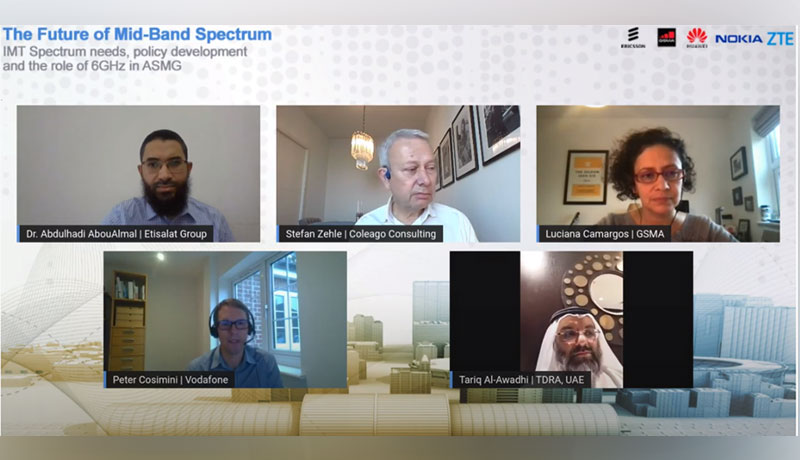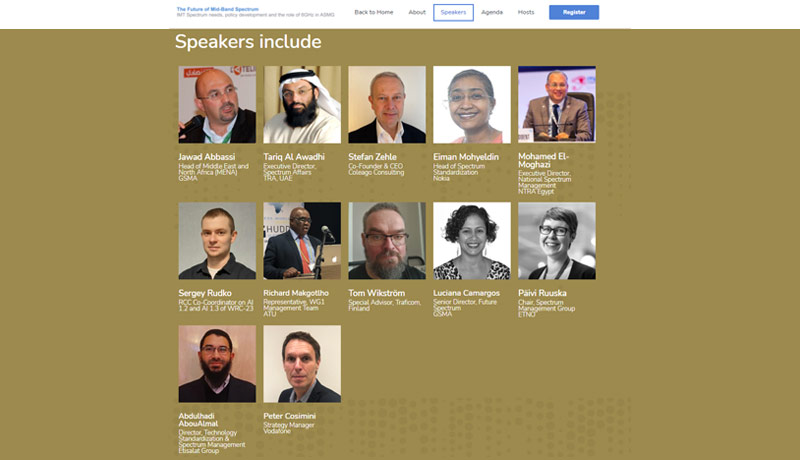
Huawei recently hosted a high-level webinar on IMT called “The Future of Mid-Band Spectrum – IMT Spectrum demands policy development, and the role of 6GHz in ASMG” in partnership with Ericsson, Nokia, and ZTE, as well as the GSMA. Policymakers and key industry participants discussed telecommunications spectrum needs, policy development, the importance of 6GHz in the Arab region, and technological research.
National leaders understand that continuing to evolve mobile technologies is critical to unlocking the benefits of 5G for society. The widespread deployment of 5G is projected to boost social and economic growth.
Many governments have made 5G a strategic development mission, and the telecom sector’s long-term viability is critical to national digital transformation. According to data, 180 operators in 72 countries/territories have declared the introduction of 5G services (either mobile or fixed wireless). The United Arab Emirates, Saudi Arabia, Germany, China, the United Kingdom, the United States, Japan, South Korea, Singapore, and a number of other countries have all issued national 5G strategies.
Traffic will continue to expand as a result of a rising user population and a growth in new and enhanced Mobile Broadband Services (HD/UHD video, AR/VR services, cloud gaming), Fixed Wireless Access, Smart City use cases, and other factors. Mobile traffic will continue to expand, reaching 100 GB per capita by 2025 and 250 GB by 2030, according to the ITU’s newest forecast study (excluding machine-to-machine traffic).

To cost-effectively service citywide capacity needs (including smart cities) and connect small villages, more mid-band licensed spectrum must be made available for 5G. This spectrum includes the 6 GHz band, which is an important option for permitted mid-band extension since it provides a good blend of coverage and capacity for a variety of 5G applications.
Speaking at the webinar, Abdulhadi Abou Almal, Director, Technology Standardization & Spectrum Management, Etisalat Group, said “500MHz(5925-6425 MHz) assignment for license-exempt Wireless Access System (WAS) is sufficient and needs to be utilized before further allocations.” Abou Almal recommended avoiding irreversible actions and supporting mobile allocation and IMT identification in 6425 –7125 MHz (700 MHz) under WRC-23 AI 1.2 as flexibility is always an advantage for future decisions.
According to Peter Cosimini, Vodafone Group’s Strategy Manager, some metropolitan 5G network locations will begin to suffer capacity constraints within the next six years, as demand for expanded mobile broadband services, fixed wireless, Smart City use cases, and other applications grow.
“With no other suitable mid-band spectrum opportunities foreseen in this decade (and perhaps beyond), not allocating the upper 6GHz band (6425-7125MHz) for IMT will have a significant impact on future public 5G network service performance and capacity with negative outcomes on our digital society and economy,” Cosimini said.
According to Luciana Camargos, Acting Head of Spectrum at the GSMA, an additional 2 GHz of licenced mid-band spectrum is needed to allow cell sites to satisfy the growing demand for 5G fixed wireless, according to a recent GSMA report on spectrum distribution. “With less spectrum, IMT-2020requirements are at risk. Otherwise, five times more base stations will be required to sustain demand,” she warned.
WRC-23 is a great opportunity to ensure spectrum harmonization for IMT in the 6425-7125 MHz band, as this band represents a key opportunity to offer large contiguous channels for citywide 5G coverage, according to Eiman Mohyeldin, Head of Spectrum Standardization at Nokia, speaking on behalf of co-hosting vendors. “Appropriate balance between licensed and license-exempt spectrum is required,” she added.
Licensing 6 GHz to IMT is critical for future economic development since it is considered the best band for providing seamless wide-area coverage and high-capacity connections. Mobile networks generate more economic and social benefit than any other wireless technology, validating the mobile industry’s request for additional spectrum. Global collaboration is essential to construct a 6 GHz telecommunications ecosystem and make it economically and timely available.
